
Colorful and well-illustrated, grade and standards-aligned and filled with tons of interesting and diverse activities touching on a range of subjects and topics, Brain Quest’s series of learning supplements can be a highly effective way for families to help students hone their skills in a more fun and flexible manner.
What We Like
But watch out for…
What Is Brain Quest
Brain Quest is a popular series of educational supplements produced by Workman Publishing that aim to help students in elementary school hone their academic knowledge and skill.
The series consists of practice cards, workbooks, summer study workbooks and board books and offers dedicated practice in everything from English language arts, math, history, science, social studies and more.
What Ages Or Grades Are Brain Quest Materials Intended For?
Through its materials, Brain Quest is intended to help students in Pre-K to Grade 7, roughly ages 0-13, with dedicated practice covering everything from basic words and colors to American history and geometry.
Its materials are grade-leveled and curriculum-linked, with their scope and sequence alignment being evaluated by a panel of educational experts gathered by the company, and (in terms of Math and ELA) are Common Core standards aligned.
As a result, it shouldn’t be too hard for most homeschooling parents to find out where to start with the series.
Being a supplement, however, Brain Quest can easily and freely be used by homeschools learning at a different pace and progression, for instance being used as a resource by precocious learners who are advancing quickly in their studies or as a way for those who are a bit behind to shore up certain skills or core knowledge.
Parents of the latter should keep in mind that Brain Quest tends to display its intended grade and age levels fairly prominently on the covers and boxes of its resources, which can make things a bit awkward for older students..
What Resources Does Brain Quest Offer?
Brain Quest offers a fair selection of practice materials to select from, including workbooks, summer review books and Smart Card review/game cards.
By and large, this means that the program offers a couple different ways in which students can practice their skills, from question and answer style discussion and memory work to workbook-style reading and writing activities.
Each of these products is independent of the other and, as they don’t need to be used as an integrated system (although they can be used as such), parents are free to choose whichever format they prefer or whatever method best suits their child’s needs, which we always appreciate.
Brain Quest Smart Cards
Brain Quest’s Smart Cards are a series of card decks intended to help students review facts and skills, an approach that we’ll discuss a little later on.
The decks are grade leveled and contain cards with a wide variety of subject-related questions and answers printed on their face.

Brain Quest Smart Cards are available as broad, curriculum-linked review decks, which touch on various subjects covered at each grade (math, reading, history, science and so on), as well as some subject-specific decks, which can provide focused practice in one area.
These cards offer a surprising level of content and subject coverage, with 300 + different questions available in each deck for preschoolers and well over a thousand for those in K-7.
In terms of their design, the cards are tall and thin, dual-sided, printed on durable cardboard and are wonderfully illustrated, with lots of colorful cartoon pictures to keep students interested and even amused, which is always nice.
The decks are riveted together, as well, which can help parents make sure that they stay organized and in one place.
This design is fairly thoughtful considering that the cards are designed to be something of a portable review option and might otherwise get lost.
One thing parents should note, however, is that the cards keep the answers to their questions on the same card deck (usually on the card following a question), which can increase the temptation to cheat somewhat and make them a bit harder to use as a review option without supervision.
Brain Quest Workbooks
In addition to its Smart Cards, Brain Quest also offers a series of grade-leveled workbooks that parents can pick up.
The workbooks are set up as an all-in-one practice resource, with different sections touching on each of the different subjects and topics typically covered in each of the K-7 grades, such as ELA, math, science and social studies.
As might be expected, the workbooks contain a wide array of exercises for each subject, such as fill in the blank questions, computational problems, math word problems, passages and comprehension questions, connect the dots, puzzles, crosswords, writing prompts, short answer problems, handwriting practice and much more.

At the end of each book are a series of review cards, somewhat like a miniature deck of Brain Quest Smart Cards, that parents and students can cut out and use for extra practice, which is kind of cool.
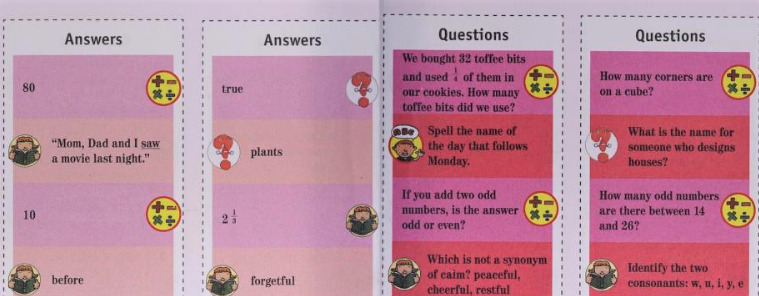
They also contain answers in the back, which is convenient for homeschooling parents but does mean that, like the Smart Cards, supervision will be required.
By and large, Brain Quests workbooks are logically arranged and well organized.
The books are neatly divided into specific and separate subjects in sort of a mastery style, each subject is color coded and each exercise has the specific topic it is working on explicitly laid out on the margins of the page.
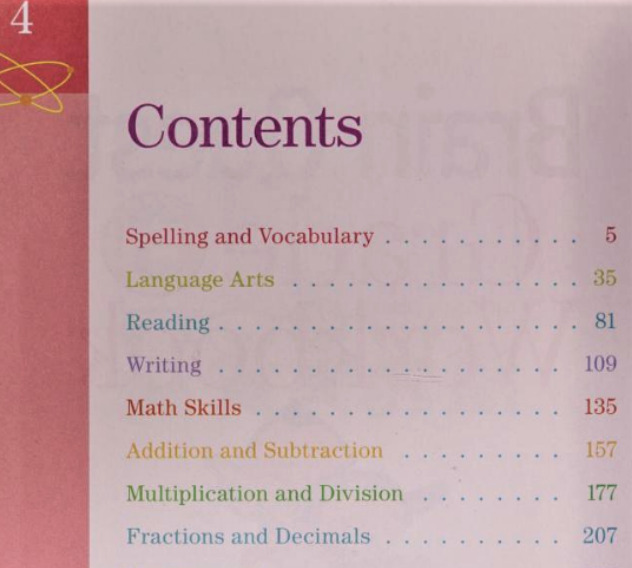
As a result, it can be quite easy and intuitive for parents to integrate their use into just about any homeschool schedule.
In terms of their design, the workbooks are full color and contain a lot of fun and well-drawn cartoon illustrations, which can make their use a little less stressful or boring for students.
One thing to be aware of, however, is that the workbooks contain little in the way of direct instruction (aside from the occasional brief skill review) or pacing information, so they do need some parental oversight to get the most out of them and can’t really be used as a method of self-study.
Summer Brain Quest
Finally, in addition to the main workbook series, Brain Quest also offers a line of summer workbooks called Summer Brain Quest.
These are somewhat shorter than the program’s workbooks (around 160 pages or so) but otherwise are quite designed in a similar way, being full color, richly illustrated softcovers filled with different workbook exercises.
Summer Brain Quest books are designed to be used between grades (such as during summer break) in order to review skills from one grade and prepare students for the next.
As with the main workbook line, Brain Quest’s summer workbooks are grade-leveled, full color and illustrated and contain a variety of exercises relating to the subjects typically taught at each grade, such as language, math, science and so on.
Unlike Brain Quest’s regular line of workbooks, however, Summer Brain Quest blends these topics together (rather than keeping them as separate sections) into progressively challenging levels, somewhat like a spiral approach.
That is, a single level may include, for example, a passage, reading comprehension questions, science questions, math work, some writing work and a history crossword.
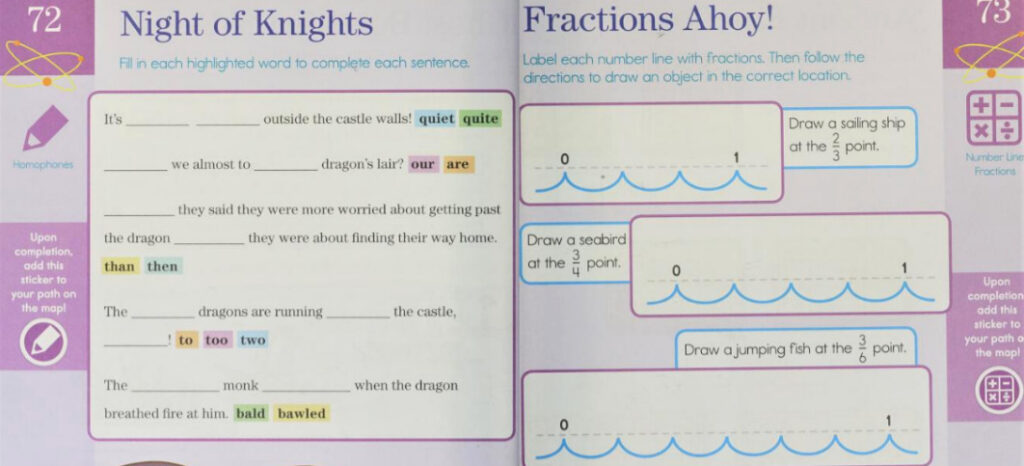
This structure does make sense as the summer books are designed to be used to keep skills fresh after a year’s learning in multiple subjects has already been taught, rather than as an extra practice option alongside a student’s weekly lessons.
Interestingly, Summer Brain Quest also comes with a pull out board game sheet, which it uses as a progress map of sorts, as well as some stickers to mark a student’s progression.
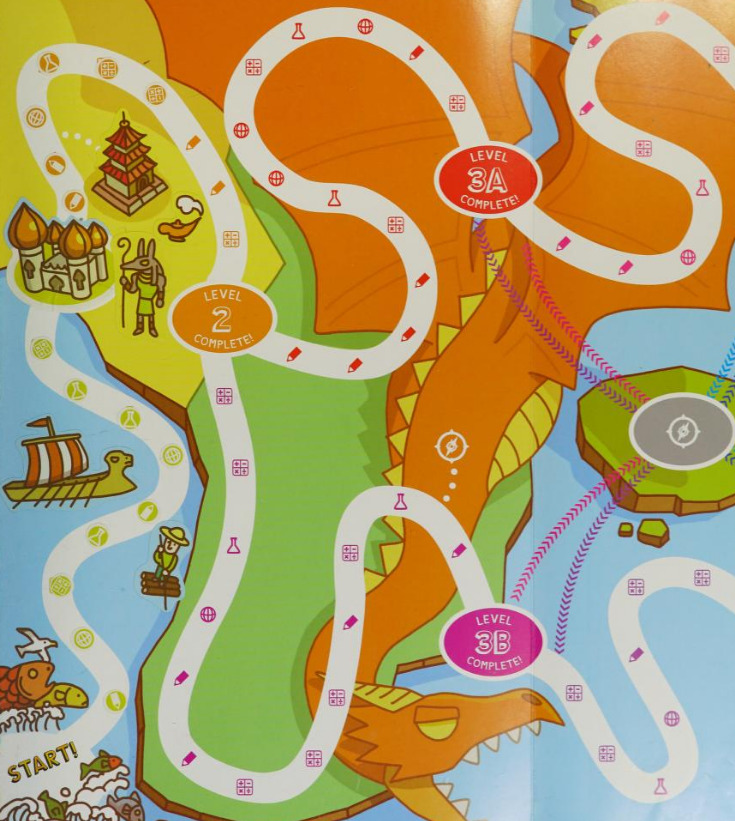
The map is, like the workbook itself, colorful and amusingly illustrated and even has little helpful icons along the pathway indicating the subject of each level’s exercises in order, which we feel is kind of a nice detail.

How It Approaches Learning & Reinforcement
Curriculum-linked, standards aligned practice
The practice materials included in Brain Quest are all grade-leveled and are specifically designed by the company (and reviewed by their team of educational consultants) to closely align to a typical K-7 curriculum, as well as Common Core state standards for math and language arts.
As a result, the questions, activities and exercises included for each subject do match the scope, sequence and topical coverage of a typical K-7 curriculum pretty well, which can make the series very easy to use as a supplement for most homeschoolers.
Those following an on-grade schedule, and even those ahead or below a grade, should be able to quickly find relevant practice (in at least the core K-7 subjects) by picking up a workbook or card deck at the grade they feel is most appropriate for their needs.
Brain Quest workbooks in particular can even work well for those following a more jagged homeschooling schedule, with certain subjects being learned at different grade levels, as their color coding allows parents to quickly pick and choose subjects to work on.
One thing some homeschooling parents should note is that Brain Quest’s exercises, questions and activities are pretty on-grade.
While this will likely serve most families quite well, they may not be sufficiently challenging practice for those following very advanced curricula, such as Beast Academy in math.
All in One and Subject Specific Supplements
Brain Quest also offers parents a fair amount of flexibility when it comes to practice and reinforcement.
Many of the Brain Quest Smart Cards are offered in a subject-specific format, allowing students to get specific practice in math, reading, science, history and more.
Meanwhile, the program’s workbooks, summer books and a good number of other Smart Card decks are offered as all-in-one supplements, covering a full year’s worth of learning across the breadth of typical K-7 subjects.
As a result, Brain Quest can be used as a general practice supplement or as a way of giving students more focused practice in specific areas they need improvement in, which can be quite helpful.
Workbook-based Activities
Brain Quest’s workbooks and summer books are filled with a wide variety of exercises and activities of different types.

Depending on the subject and skill being practiced, students might be asked to:
- Match items
- Fill in the blanks
- Circle answers
- Do some computational math problems
- Solve word problems
- Read a passage
- Answer short questions
- Solve a puzzle
- Do crosswords and word jumbles
- Complete a sudoku square
- Draw something
- Write a short composition
- And much more
Combined with the use of bright colors and fun illustrations, the great diversity of workbook activities can make supplementary practice far more engaging, meaning that students using Brain Quest will be less likely to get bored and tune out.
More than that, the different activity types can give students the opportunity to practice their skills in many different ways, which can help reinforce and strengthen their learning over time.
That said, it should be noted that, as far as activities go, Brain Quest’s workbooks are pretty reading and writing intensive.
We didn’t find there to be quite as many integrated kinesthetic, tactile or craft activities found in the series that some other multisensory programs, which can be a bit of a let down for those who prefer to include more multisensory practice, such as those following a Charlotte Mason approach to learning.
To be sure, there are some “outside quests” offered as extra exercises, particularly in the summer workbook series, and these can get kids outside doing things like writing in chalk or doing a nature walk of some kind, but there are only a few pages of suggestions towards the end and they aren’t really tightly integrated into the core practice element.

Question and Answer Games
Finally, Brain Quest can reinforce learning through Q&A games played with its Smart Cards.
As mentioned, cards have knowledge and skill testing questions printed on them with the answers located on the following card.
Students and parents (or a pair of students) can use these cards to engage in a quiz-style game where a student is presented with a problem with a card and then must work out and provide the right answer (either for points or just for fun).
Brain Quest’s cards aren’t simply memory exercises, but instead contain a wide variety of grade-leveled questions, puzzles and challenges from across math, history, science, social studies and even language arts.
Students may, for example, be asked to analyze a picture and find certain items, identify certain phonic sounds, or even read a passage and answer comprehension questions.
Much like Brain Quest’s workbooks, these card games can therefore test both knowledge of facts and actual subject-level skill, which makes them stand out from the simple flashcards used as practice in most other programs. .
In addition, being more interactive, verbal and auditory than Brain Quests’ other offerings, they can be a good alternative to students who dislike workbook-based practice.
How It Works
How Brain Quest works really depends on which resource is used, but by and large the materials are pretty straightforward in their approach to providing supplemental practice.
Smart Cards
Although they can be used for individual review, as we’ve mentioned Brain Quest Smart Cards are intended to be used as a kind of game to be played between students (or between parents and students).
Each box contains two decks of the same cards (one for each player).
Upon these cards are printed between 300-1500 or more questions and their respective answers, with about 3-10 on each card depending on the intended grade or age range of the set.
The questions on the cards can either be multi-subject, representing a complete grade’s worth of learning, or focused on a specific skill or discipline, such as reading or math.
Essentially, the game is played like a quiz bowl or trivia game and players go back and forth challenging each other with different skill-testing questions to see who can rack up the most points (awarded for correct answers, obviously) in a given time frame.
Workbooks and Summer Brain Quest Books
As we’ve stated, both the Brain Quest Workbooks and Summer Brain Quest books are essentially grade-leveled workbooks with a diversity of exercises that test a student’s skills in core elementary school subjects.
Workbooks
Brain Quest Workbooks are divided up into several sections, each focusing on subjects or topics typically covered at that grade, such as:
- Spelling
- Vocabulary
- Language Arts
- Reading
- Writing
- Math Topics
- Social Studies
- Science
The length of each section can vary, but typically can be anywhere from 20-50 pages long with 1-3 activities per page, meaning there can be quite a bit of work for each subject.
Each section or subject is assigned a color and the focus of each exercise is helpfully written out in the margins of each page, which can help parents keep a closer eye on what skills students are specifically working on.

The idea behind this is that as students progress through their school year, they can turn to relevant sections of Brain Quest workbooks for extra practice problems
The workbooks are, essentially, designed to accompany a typical school curriculum as ready extra practice with exercises that get progressively more complex as they go on.
At the end of each book are, helpfully, several pages with complete answer sheets that parents can use to make sure students are on the right track, as well as some cards that can be cut out and used as a mini-Smart Game deck for extra review, which is nice.
Overall, there isn’t much in the way of teaching or instructions in Brain Quest workbooks beyond a simple explanation of an activity’s goals and, occasionally, a review of concepts.
While this means that they can’t be used as instructional material, and while it means that homeschooling parents will have to put a little thought into how to best deploy these materials during lessons, it also means that Brain Quest workbooks can be surprisingly flexible.
Without a lot of direct instruction, they can be used alongside just about any homeschooling curriculum without conflict as long as their topics have been first introduced during lessons, and parents can assign as little or as much practice as they feel comfortable with.
Summer Brain Quest
Like the workbooks, Summer Brain Quest is a series of activity filled consumable books covering the core subjects and skills for K-7 grades.
Unlike the Brain Quest Workbooks, these are designed to be used after a year’s learning as a way of keeping kids sharp over summer break.
As we’ve mentioned, they are typically divided into 13 sections or levels, each of which is composed of a number of different exercises and activities that cover a general blend of subjects and topics in no particular order.
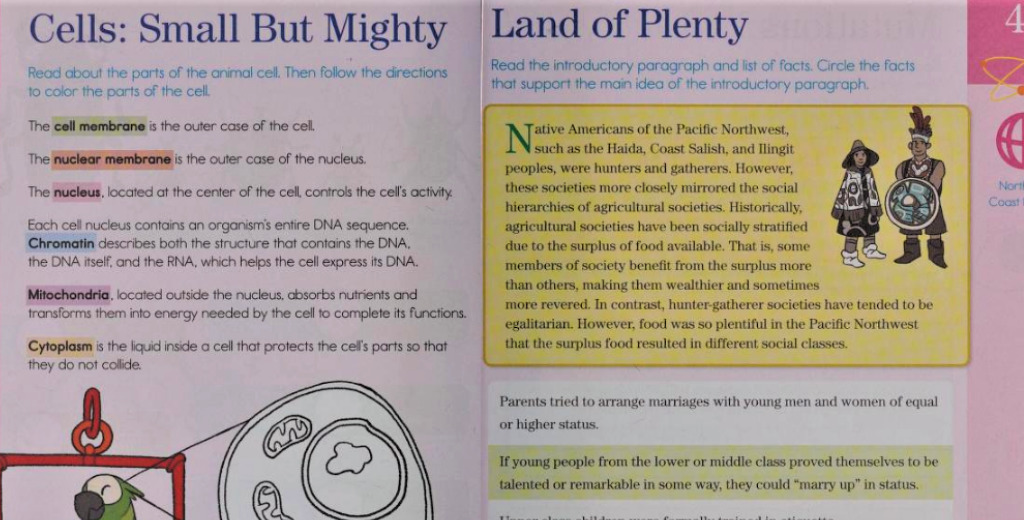
A page with science work, for example, could be next to a social studies reading – the order doesn’t really matter as the idea is that students have already covered most of the skills they need across these subjects and the workbooks are simply there to help hone their skills over summer break.
As the levels progress, so does the challenge of their exercises, much like a traditional school year.
The books themselves are based around a progress chart that folds out of the workbook and that looks much like a board game.
Each level is represented by a pathway, with little icons representing the different subjects and activities they will have to complete.
As they complete each level, students have little stickers that they can put on the map to mark them as complete before being directed to the next level.
Students generally progress forwards on the map until they occasionally hit a fork in the “road.”

This fork represents a choice they can make as to which direction level they would like to next move on to on the map, which in turn gives students a bit of a feeling of being in control that might be appreciated.
The books largely continue in this way until students have gone through each path and completed their various activities and receive a special 100% complete sticker, as well as a cute certificate that can be cut out, filled out and given to the child.

Interestingly, each book in Summer Brain Quest also includes an age/grade-appropriate reading list, as sort of an extra activity, and (at upper grades at least) encourages them to write a little review and think about the books a little more thoroughly using a set list of questions.
Is Brain Quest A Secular Homeschool Resource?
Brain Quest is a secular resource designed to be broadly used as extra practice for both homeschools and those studying in traditional public school classrooms.
At times it may touch on things like the fossil record, the big bang and so on.

While it may touch on different cultures and faiths at times (particularly as part of social studies or studies of history) it does so in an academic manner, treating different cultures and beliefs respectfully but not taking a position one way or another.
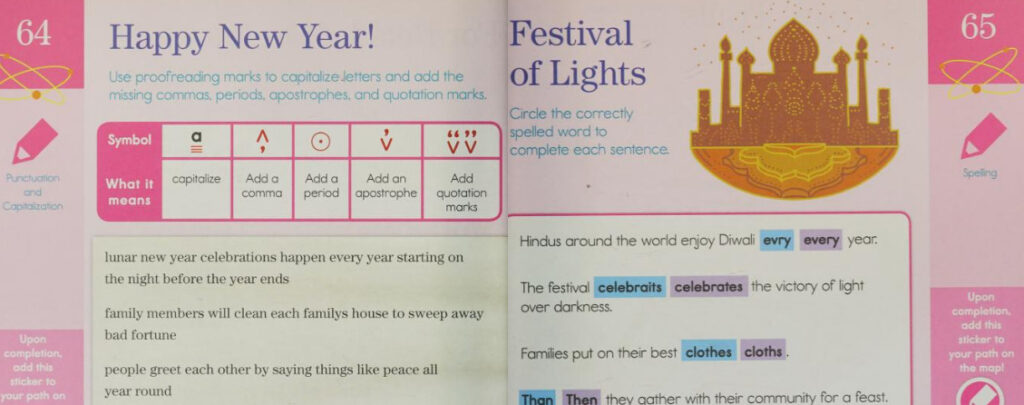
Overall, we feel it can be an excellent resource for secular families, as well as neutral and faith-based families who either don’t mind or are willing to do a little modification and planning, but may not be the most ideal for those looking for a strongly religious resource.
How Easy Is Brain Quest To Use?
For the most part, we feel that Brain Quest can be a fairly easy to use supplement to add to a student’s learning.
They are pretty simple as a resource, being fairly straightforward practice supplements that follow and are pretty on-grade for a typical K-7 curriculum.
As a result, most parents can pretty much pick up the grade level of the resource they are interested in and turn to a subject they want their student to practice.
The only real issue some homeschools will face with these stems from the fact that they are strongly aligned to a typical grade level/Common Core curriculum.
Those following a more unconventional homeschooling approach may find things to be a bit out of order, requiring them to do a little research and examination of each resource’s scope and sequence before starting.
We would recommend that such parents start by looking at Brain Quest’s workbooks, as their color coding and mastery-style, topic and subject-specific sections can make planning a bit easier.
Pros and Cons Of Brain Quest
Pros
Curriculum and standards-aligned practice
Brain Quest materials are on-grade, aligned to Common Core state standards for math and language arts and are vetted by a number of educational experts to ensure that they do correspond to a typical K-7 core curriculum in science, social studies, math, ELA and more.
As a result, the practice materials are relevant, quite easy to pick up and use, and fairly easy to integrate into most homeschool learning schedules.
Different practice resources available
In addition to workbooks, Brain Quest also offers practice materials in the form of a quiz-like card game and a fun, board game-like comprehensive summer skill review book.
Colorful and wonderfully illustrated
All of Brain Quest’s materials are full color and contain fun and well-designed cartoon-like illustrations, which make them a lot more interesting to look at and use for kids.
Huge variety of activities and exercises in each resource
Brain Quest’s cards offer up to 1500+ questions in each deck, each testing a student’s skill in a different way, and its workbooks are filled with a huge variety of puzzles and exercises.
From writing prompts to puzzles to games to crosswords to short research projects and everything in between, there is no shortage of fun, subject-linked activities that will keep a student on their toes.
Offers both general and subject-specific practice
Brain Quest offers both subject specific practice (a subset of its card games) and full year, multi subject practice options (in the form of its workbooks and certain card decks), which offers parents a greater degree of choice and flexibility of use than other programs.
Easy to integrate into most homeschool programs
With its color coded workbooks, few prescriptive rules, easy to discern grade-linkage and wide variety of activity types, Brain Quest is a supplement that is easy to fit into a variety of homeschooling approaches and schedules, even those that don’t follow the Common Core.
Cons
Doesn’t always offer a lot of direct instruction
Although it does offer a basic topical refresher from time to time, generally speaking Brain Quest is a straight practice resource and, with little in the way of ready pacing and direct instruction, should be used under parental direction alongside formal curricula in its subject matter.
Not all that multisensory
Although Brain Quest’s materials can be interactive/game-like and have some outdoor and hands-on practice exercises, by and large it is mostly a reading and writing based program that lacks some of the interesting and fun craft activities and integrated whole body exercises other programs might offer.
Who Is Brain Quest Ideal For?
Those looking to add more practice in one or multiple areas
With thousands of grade-linked questions and hundreds of workbook pages spanning across various topics in science, literature, language arts, social studies, math and more, Brain Quest can be a great resource for those looking to add some more practice to an existing curriculum.
Those who want to ensure they are covering standard curricular topics
Some homeschools using non-aligned or unconventional curricula may still want to make certain that they haven’t missed anything when it comes to subject coverage, particularly of the core subjects of ELA, science and math.
Being standards aligned and correlating with a typical K-7 school curriculum, Brain Question can be a great way for homeschooling families to make sure that all their bases are covered.
Those looking to add fun activities, puzzles and a diversity of exercises to lessons
With crosswords, board games, Q&A games, puzzles, sudoku, fill in the blanks, word problems, writing exercises, research projects and more, Brain Quest offers a ton of different ways for students to practice core K-7 skills and can be a great resource for homeschools looking to add more interesting activities to lessons.
Parents interested in keeping a student’s skills sharp
With interesting challenges, a rewarding board game layout and covering grade-level skills and knowledge for each grade, Summer Brain Quest can be an interesting and effective way for students to stay sharp and ensure that knowledge and skill gaps don’t develop over long, summer breaks.
Fans of quiz games
Families who are fans of quiz games will likely enjoy Brain Quest’s review cards, as they use a trivia style approach to thoroughly hone students’ skill with up to 1500 curriculum-linked questions in a deck.
Who Is It Not Ideal For?
Those looking for advanced or highly complex exercises
Although the activities are fun and diverse and the questions do a good job at testing the skills and knowledge of the subject matter, Brain Quests’ materials are largely on-grade in terms of difficulty and complexity and may not be the best choice for those looking for very challenging and advanced practice materials.
Those looking for a resource with lots of crafts and kinesthetic activities
Although each resource tends to have some, by and large Brain Quest relies on its quiz game and reading/writing work and doesn’t really integrate a ton of craft, kinesthetic and tactile activities to help students practice.
Price
Note: Prices correct as of writing, all prices in USD.
As we’ve pointed out, Brain Quest offers a few different supplemental resources for families of students in K-7 to choose from, including Smart Cards, Workbooks and Summer Brain Quest workbooks.
The approximate price for each can be found below.
Brain Quest Workbooks – $12.95 each
Brain Quest Cards – $11.95 each
Summer Brain Quest – $12.95 each
As always, we recommend that parents check for the latest prices, as well as for any deals or offers that may be available.
Or
Is It Worth it?
Overall, we feel that Brain Quest’s resources can be helpful resources for many homeschooling families.
Whether it’s the program’s cards, workbooks or summer reviews, Brain Quest offers students a lot of different fun activities and a wealth of practice to help hone their skills, either in general or in a particular area.
These run the gamut from short answer questions to readings to crosswords, sudoku puzzles and even drawing and writing activities, so kids are more likely to stay on their toes and less likely to get bored or zone out while doing their work.
Finally, the resources are curriculum-linked, on-grade and standards-aligned, which means they are relevant to most programs, but are still flexible as supplements and can easily be adapted to more unconventional homeschool curricula, as well.
Bottom Line
Colorful and well-illustrated, grade and standards-aligned and filled with tons of interesting and diverse activities touching on a range of subjects and topics, Brain Quest’s series of learning supplements can be a highly effective way for families to help students hone their skills in a more fun and flexible manner.

About the Author
Anne Miller is the editor of The Smarter Learning Guide and is a passionate advocate for education and educational technology. A mom of two, she majored in English Language and Literature and worked as a substitute teacher and tutor for several years. When not writing she continues to root for the Yankees and the Giants.
